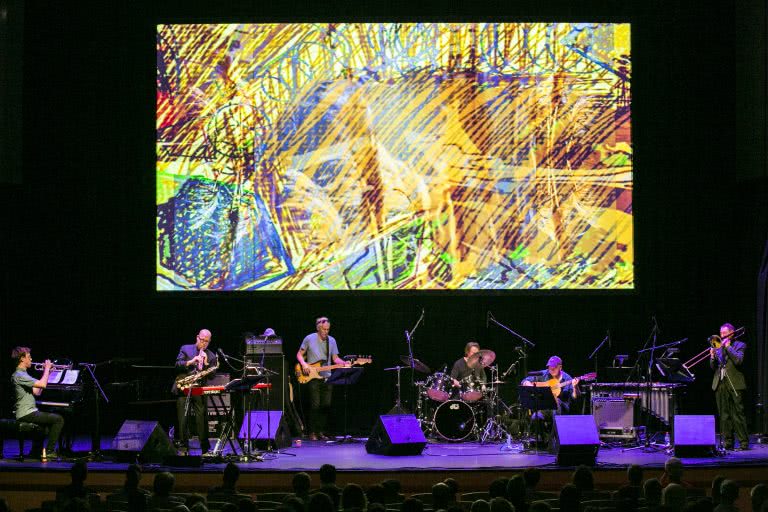Reviewed on Saturday January 16 (photo by Jamie Williams)
The late Arthur Russell was a musical genius – underappreciated in the time before his death from AIDS-related illness in 1992. Russell was classically trained on cello, and in traditional Indian music, but he was never snobbish in his music tastes, believing that pop music could have as much emotional impact as classical. His prolific and diverse musical output blurred the lines between high and low culture in surprising and joyous ways – ranging from whimsical folk songs featuring little more than his striking voice and jangly guitar, to pioneering experiments in sound and reverb on cello, and some of the most iconic early house bangers to ever melt dancefloors in sweaty pools of boundless euphoria.
His music wasn’t so much ahead of its time, as completely outside of time – pure and honest creative expression that varied so wildly from song to song that he often released his music under different monikers. Fans would have struggled to keep track of what he was creating in the pre-internet era, but after being posthumously championed by the likes of Pitchfork, he’s found his way into the ears of a whole new generation, and acquired a rabid cult following of listeners who wonder how one human could have created such a brilliant and eclectic body of work.
Arthur Russell’s Instrumentals is a collection of gorgeous compositions he performed with a community of New York musicians in 1974-75. The spaghetti-Western-tinged sound is evocative of wide open spaces with its shuffling drums, gently strummed guitars and soaring melodies on saxophones and trombone. Most individual tracks are playful exercises on a melodic idea, but the songs blend together to create a much greater whole.
This masterpiece was lovingly brought to life by a seven-piece band, many from the original community of musicians Russell used to perform with. Under the direction of Peter Gordon, they masterfully recreated the mesmerising ebb and flow of the original album – gradually building tension through endless repetition of subtly mutating melodies and chord progressions that occasionally exploded in a sublime rush of joyous horns over crashing drums, loping bass grooves and piano, before simmering back down to just a lonesome trombone and soft vibraphone. There was rarely a break in the music – the band carried the listeners seamlessly along the emotional highs and lows of the interwoven melodies. The effect was like gliding on a river through a vast American landscape: alternately soothing, thrilling and profoundly beautiful.
Only the final track deviated from the script – a loose, funky rendition of the seminal 1980 disco classic ‘Is It All Over My Face’. But no-one complained about that.

































